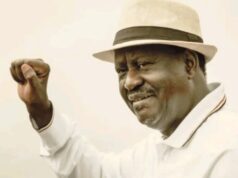Mine collapse in Zambia has tragically claimed the lives of at least 10 people, with several more miners feared to be trapped underground. The collapse occurred in the Mumbwa district, roughly 150 kilometers west of Lusaka, the capital of Zambia. As rescue operations continue, authorities are still trying to determine the exact number of people affected.
This devastating event brings to light the ongoing dangers miners face, particularly those working in informal mining operations.
Rescue Efforts Continue Amidst Uncertainty
After the mine collapse in Zambia, police and emergency teams quickly mobilized to conduct rescue efforts. According to Charity Munganga Chanda, the police commissioner for Zambia’s Central Province, nine bodies were recovered from the collapsed mine, and a tenth victim later died in the hospital. In addition, five miners were injured and are currently receiving treatment for their injuries.
Rescue operations are ongoing, but officials are still unsure of how many miners remain trapped. Collins Nzovu, a government minister and member of Parliament for the region, revealed that as many as 20 miners may be missing and feared dead, though police have not yet confirmed this figure.
The mine collapse in Zambia has raised concerns about the safety protocols in place for mining activities, particularly in unregulated, informal mining operations.
Informal Mining: A Growing Hazard
The miners involved in the mine collapse in Zambia are suspected to be informal or artisanal miners, a common practice across southern Africa. Informal mining refers to unregulated mining activities carried out without formal contracts or safety oversight. Many miners, often operating without the necessary safety equipment, are left vulnerable to accidents, such as the collapse that occurred in Mumbwa.
Informal mining has grown in Zambia due to high unemployment rates and the promise of potential income, especially in resource-rich areas like Mumbwa. However, this growth has come with significant risks, as shown by the recent mine collapse in Zambia. Miners working without oversight face unstable conditions, increasing the likelihood of fatal accidents.
Mumbwa District: Mining Hub and Risk Zone
The mine collapse in Zambia occurred in Mumbwa, a district that has seen a rise in mining activities in recent years. Mumbwa is an area rich in minerals such as copper, which plays a crucial role in Zambia’s economy. As one of Africa’s largest copper producers, Zambia relies heavily on mining, though the growth of informal mining operations has complicated efforts to ensure safety in the sector.
The growing number of informal miners in Mumbwa and across the country has created an ongoing challenge for authorities, as these miners often work in dangerous, unregulated environments. The mine collapse in Zambia underscores the urgent need for increased regulation and better safety measures to protect miners’ lives.
A History of Mining Tragedies in Zambia
Sadly, the mine collapse in Zambia is not an isolated event. Zambia has seen several mining disasters over the years, particularly involving informal miners. Just last year, a similar incident occurred in the town of Chingola, where dozens of informal miners were killed by landslides while working in an open-pit copper mine near the Congo border.
These recurring accidents highlight the risks associated with informal mining and the need for stronger safety regulations in the industry. The mine collapse in Zambia has once again drawn attention to the gaps in mining safety, especially for those operating outside the formal sector.
Government and Community Response
In the wake of the mine collapse in Zambia, there has been widespread mourning and calls for action from both the local community and government officials. Families in Mumbwa have been left devastated by the loss of their loved ones, and many are calling for better protections for miners.
Government minister Collins Nzovu expressed his sorrow over the tragedy, urging for more robust rescue operations and a thorough investigation into the cause of the collapse. He emphasized the importance of addressing the safety concerns that led to the mine collapse in Zambia, stressing that both informal and formal miners deserve adequate protection from such dangers.
While the Zambian government has not yet issued an official statement regarding potential regulatory changes, the disaster has reignited calls for reform in the mining sector. Many believe that more stringent safety measures and better oversight are crucial to preventing further accidents.
Need for Mining Reforms
The mine collapse in Zambia has highlighted the urgent need for regulatory reforms in the country’s mining sector. Informal miners, who often work without the protection of labor laws or safety protocols, face the highest risks in their work. Experts argue that the Zambian government should implement reforms that provide better protections for these miners, including safety training and access to regulated mining sites.
The sheer number of informal miners working across Zambia poses a significant challenge for authorities. However, integrating these miners into the formal sector, where safety protocols can be enforced, may help reduce the frequency of fatal accidents like the **mine collapse in Zambia.








